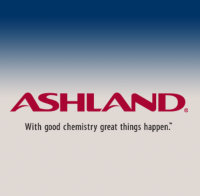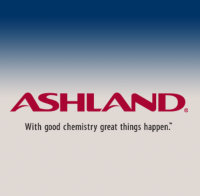
Ashland Global Holdings Inc
NYSE:ASH


| US |

|
Johnson & Johnson
NYSE:JNJ
|
Pharmaceuticals
|
| US |

|
Berkshire Hathaway Inc
NYSE:BRK.A
|
Financial Services
|
| US |

|
Bank of America Corp
NYSE:BAC
|
Banking
|
| US |

|
Mastercard Inc
NYSE:MA
|
Technology
|
| US |

|
UnitedHealth Group Inc
NYSE:UNH
|
Health Care
|
| US |

|
Exxon Mobil Corp
NYSE:XOM
|
Energy
|
| US |

|
Pfizer Inc
NYSE:PFE
|
Pharmaceuticals
|
| US |

|
Palantir Technologies Inc
NYSE:PLTR
|
Technology
|
| US |

|
Nike Inc
NYSE:NKE
|
Textiles, Apparel & Luxury Goods
|
| US |

|
Visa Inc
NYSE:V
|
Technology
|
| CN |

|
Alibaba Group Holding Ltd
NYSE:BABA
|
Retail
|
| US |

|
3M Co
NYSE:MMM
|
Industrial Conglomerates
|
| US |

|
JPMorgan Chase & Co
NYSE:JPM
|
Banking
|
| US |

|
Coca-Cola Co
NYSE:KO
|
Beverages
|
| US |

|
Walmart Inc
NYSE:WMT
|
Retail
|
| US |

|
Verizon Communications Inc
NYSE:VZ
|
Telecommunication
|
Utilize notes to systematically review your investment decisions. By reflecting on past outcomes, you can discern effective strategies and identify those that underperformed. This continuous feedback loop enables you to adapt and refine your approach, optimizing for future success.
Each note serves as a learning point, offering insights into your decision-making processes. Over time, you'll accumulate a personalized database of knowledge, enhancing your ability to make informed decisions quickly and effectively.
With a comprehensive record of your investment history at your fingertips, you can compare current opportunities against past experiences. This not only bolsters your confidence but also ensures that each decision is grounded in a well-documented rationale.
Do you really want to delete this note?
This action cannot be undone.

| 52 Week Range |
71.41
101.19
|
| Price Target |
|
We'll email you a reminder when the closing price reaches USD.
Choose the stock you wish to monitor with a price alert.

|
Johnson & Johnson
NYSE:JNJ
|
US |

|
Berkshire Hathaway Inc
NYSE:BRK.A
|
US |

|
Bank of America Corp
NYSE:BAC
|
US |

|
Mastercard Inc
NYSE:MA
|
US |

|
UnitedHealth Group Inc
NYSE:UNH
|
US |

|
Exxon Mobil Corp
NYSE:XOM
|
US |

|
Pfizer Inc
NYSE:PFE
|
US |

|
Palantir Technologies Inc
NYSE:PLTR
|
US |

|
Nike Inc
NYSE:NKE
|
US |

|
Visa Inc
NYSE:V
|
US |

|
Alibaba Group Holding Ltd
NYSE:BABA
|
CN |

|
3M Co
NYSE:MMM
|
US |

|
JPMorgan Chase & Co
NYSE:JPM
|
US |

|
Coca-Cola Co
NYSE:KO
|
US |

|
Walmart Inc
NYSE:WMT
|
US |

|
Verizon Communications Inc
NYSE:VZ
|
US |
This alert will be permanently deleted.
 Ashland Global Holdings Inc
Ashland Global Holdings Inc
Ashland Global Holdings Inc
Investor Relations
Ashland Global Holdings Inc., a company with a long-standing history, has gracefully evolved from its roots as a diversified conglomerate into a focused chemical specialist. Originally founded in the early 20th century, Ashland navigated through decades of transformation and divestitures, honing its expertise to become a key player in the specialty chemicals industry. With a strategic emphasis on high-performance materials and ingredients, the company's operations pivot around crafting unique chemical solutions that cater to diverse sectors, including pharmaceuticals, personal care, and food and beverage. By prioritizing innovation and sustainability, Ashland consistently develops advanced formulations and specialty additives that deliver tangible benefits in product performance, thus creating a competitive edge in the market.
The company's revenue machine churns primarily through its robust portfolio of specialty chemicals, which play essential roles as enhancers and stabilizers in various products. For instance, Ashland's pharmaceutical and health-related polymers are pivotal in drug formulations, offering superior consistency and quality that manufacturers rely on. Additionally, its personal care ingredients, renowned for enhancing the sensory and functional attributes of beauty products, generate substantial portions of its earnings. By embedding itself deeply into the supply chains of high-growth industries, Ashland Global Holdings not only solidifies lasting relationships with its clients but also continuously adapts to market demands and trends, ensuring its products remain indispensable in their respective fields. Through this strategic alignment of innovation, customer focus, and operational excellence, Ashland sustains its financial health and profitability in the fluctuating chemical markets.

Ashland Global Holdings Inc., a company with a long-standing history, has gracefully evolved from its roots as a diversified conglomerate into a focused chemical specialist. Originally founded in the early 20th century, Ashland navigated through decades of transformation and divestitures, honing its expertise to become a key player in the specialty chemicals industry. With a strategic emphasis on high-performance materials and ingredients, the company's operations pivot around crafting unique chemical solutions that cater to diverse sectors, including pharmaceuticals, personal care, and food and beverage. By prioritizing innovation and sustainability, Ashland consistently develops advanced formulations and specialty additives that deliver tangible benefits in product performance, thus creating a competitive edge in the market.
The company's revenue machine churns primarily through its robust portfolio of specialty chemicals, which play essential roles as enhancers and stabilizers in various products. For instance, Ashland's pharmaceutical and health-related polymers are pivotal in drug formulations, offering superior consistency and quality that manufacturers rely on. Additionally, its personal care ingredients, renowned for enhancing the sensory and functional attributes of beauty products, generate substantial portions of its earnings. By embedding itself deeply into the supply chains of high-growth industries, Ashland Global Holdings not only solidifies lasting relationships with its clients but also continuously adapts to market demands and trends, ensuring its products remain indispensable in their respective fields. Through this strategic alignment of innovation, customer focus, and operational excellence, Ashland sustains its financial health and profitability in the fluctuating chemical markets.





























 You don't have any saved screeners yet
You don't have any saved screeners yet
